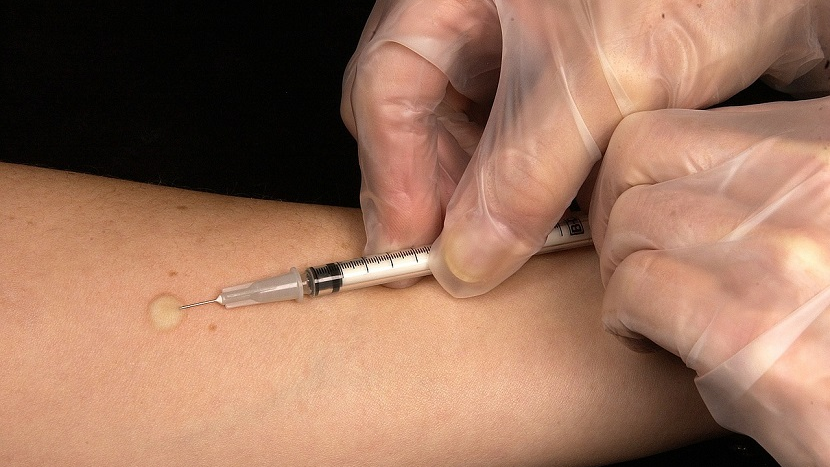
Image for representation purpose only
Thursday,– A study undertaken by the International Union for Tuberculosis and Lung Disease (The Union) – and announced at the 49th Union World Conference on Lung Health - has potentially saved 2000 children under five years of age from developing TB in Benin, Burkina Faso, Cameroon and the Central African Republic.
The TITI (Transmission Investiguée de la Tuberculose Infantile) Study explored methods to reduce the number of children who fall ill to TB by finding all children at increased risk and placing them on treatments aimed at preventing TB.
The World Health Organization (WHO) strongly recommends TB preventive therapy to children under the age of five who are household contacts of bacteriologically confirmed TB cases. Yet only 23 percent of an estimated 1.3 million children under the age of five who were household TB contacts and eligible for TB preventive therapy actually received it. (WHO Global TB Report 2018).
The TITI study targeted children under five living in a household with an adult diagnosed with smear-positive pulmonary TB at participating TB clinics, and enrolled them onto the study after obtaining their parents’ informed consent. Children were evaluated during home and clinic visits using a standardised questionnaire, clinical examination, tuberculin skin test (TST) and chest radiography. Children free of active TB were offered preventive treatment using a shorter regimen of rifampicin–isoniazid (RH75/50) for three months in Burkina-Faso, Cameroon and CAR, which reduces by half the duration of the six-month regimen of isoniazid used in most countries.
The preliminary results of the TITI study showed that of the nearly 2,000 children enrolled in the study, 90 percent were started on preventive therapy, with 92 percent of children completing their course of preventive treatment. Five percent of children were diagnosed with active TB and placed on treatment.
José Luis Castro, Executive Director of The Union said: “Children with TB have been widely neglected by health systems, but the human-rights-based TB agenda established at the recent United Nations High-Level Meeting on TB sends a clear signal that such scandalous practices will no longer be tolerated at any level of the response.
“Worldwide today, very few children who are exposed to TB infection in their own homes are provided preventive therapy to protect them from becoming sick. Studies like The Union’s TITI study can make a huge difference to the response rate, and provide a vital way to ensure the rights of every child are respected.”
Close to 2000 child contacts were included in the study. 5% of them were diagnosed with active TB. 90% were started on preventive treatment. Attendance to monthly visits during treatment was good, with over 90% of children completing their course of preventive treatment. No serious adverse events were reported. Follow-up after the end of treatment completion is still ongoing.
A study in Taiwan analysed the effectiveness of a three-month weekly treatment course of rifapentine plus isoniazid (3HP), compared to a nine-month daily course of isoniazid (9H), for latent TB to prevent active TB. Long treatment duration and drug-related hepatotoxicity are known to limit the effectiveness of 9H, however, there is currently no data available on 3HP.
Presenter Jann-Yuan of National Taiwan University Hospital, noted higher completion rates of 3HP, compared to 9H. The study, which took place in four hospitals between January 2014 and May 2016, also looked at the adverse drug reactions (ADR). It found ADR risks were similar.
Scale-up success in early-phase therapy for HIV in Malawi
An analysis of early-phase implementation of isoniazid prevention therapy (IPT) for people living with HIV in Malawi has found the treatment to be effective. Therefore, Malawi was right to scale-up the therapy in the five highest TB-HIV-burden districts.
The aim of the two-stage cluster survey was to measure the frequency and timeliness of early-phase IPT uptake in a programmatic setting.
The study sampled 271 new-to-care people living with HIV. The overall weighted uptake of the therapy was 70%, of which 82% continuing IPT at the follow-up visit.
Laurence Gunde of the Centers for Disease Control and Prevention in Lilongwe, Malawi, also noted excellent timeliness of early assessments and therapy of TB. As 96% started antiretroviral therapy (ART) within one week of HIV diagnosis, and 91% of IPT starts occurred on the same day the person began ART.
The weighted uptake for children with HIV younger than 15 years of age (30 per cent) was significantly lower than for people aged 15 years and over (72 per cent). The weighted uptake of people with HIV younger than 5 years was only 13% per cent. For pregnant women, weighted uptake was 67 per cent, which was similar to that for non-pregnant women 15 years and over (72 per cent).
Patient choice key to isoniazid preventive therapy treatment completion in Swaziland
A retrospective study has found 100% of participants in an isoniazid preventive therapy (IPT) study reported being offered a choice was important to their treatment completion.
In 2015-16, a prospective cohort study successfully determined an effective model for IPT delivery using patient preferences in Swaziland. An immediate follow-up study was undertaken to identify the key factors that favorably influenced patient adherence and treatment completion.
Presenting the data, Lisa Adams, Associate Dean for Global Health and an Associate Professor of Medicine in the Section of Infectious Disease and International Health at Dartmouth Geisel School of Medicine, U.S., concluded offering patients a choice in IPT delivery, linking antiretroviral therapy and IPT pick-up, emphasising patient education and engagement with healthcare workers, and supporting appropriate disclosure of IPT are critical factors to enabling IPT completion.